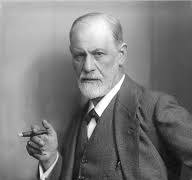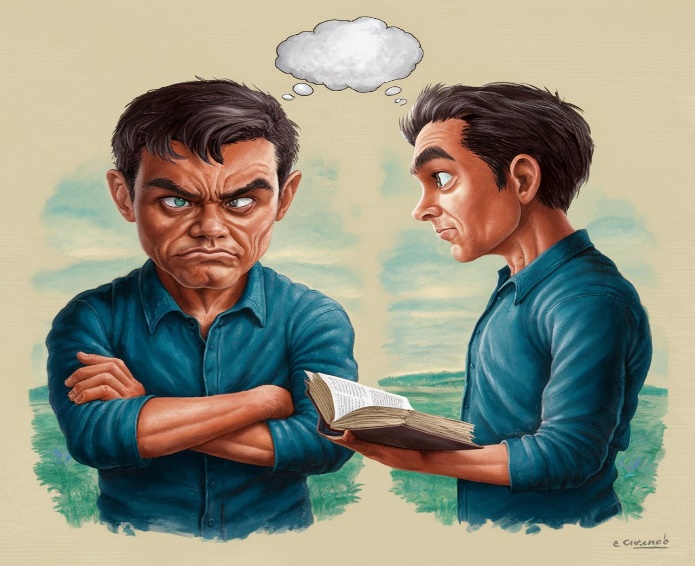Archive
You are currently browsing the archives for the Shared blog category.
By Prof. Levine & Dr. Salganik
Hello all
In our model, the self includes the elements of the human psyche. The model first assumes the existence of the "primary self", which is in fact the basic biological core consisting of several innate structures and subject to development during life, this self includes the instinctive emotional and cognitive parts of the person. The primary self uses the reservoirs and mechanisms of emotion, memory and cognitive abilities and it contains primary nuclei for the future development of other mental structures.
Let's first refer to the primary self (Biological Premordial Core): the primary self consists of innate biological structures and instincts that form the innate basis of the parts of the personality and it also included the cognitive processes and the emotional processes. This primary self has its own dynamics during a person's life and is subject to changes with age, following diseases, traumas, drug consumption, addiction, etc. Both the instincts and the basic needs in each and every person change according to different periods of development and aging – (hence their effect on behavior) and may change through drugs, trauma, diseases and more. Within the primary self there is the potential for instrumental abilities that are innate, but they can also be promoted, or on the contrary, suppressed through the influence of the reference groups. The primary self also has cognitive abilities that are partly innate and partly dependent on interactions with the environment during the first years of life. In addition, it includes the temperament and emotional intelligence that are partly innate and partly dependent on interactions with the environment in the first years of life. And finally, it includes an energy charge that is mostly innate but can be suppressed through the influence of the reference groups, as well as through various situational factors. The primary self also includes the six personal sensitivity channels: Individual Sensitivity Channels (ISC) which reflect our individual reactivity in response to stressors (both external and internal). So far we have identified six channels of sensitivity:
- Sensitivity regarding a person's status and position (status channel)
- Sensitivity to changes in norms (norm channel)
- Sensitivity regarding emotional attachment to others (attachment channel)
- Sensitivity to threat (threat channel)
- Sensitivity for routine changes (routine channel)
- Sensitivity to a decrease in energy level and the ability to act derived from it (energy channel)
From the initial self, they continue to develop from innate nuclei that constitute a primordial basis for development in the interaction of the baby and later the person during his life with the figures in his environment and the events of reality. Consequently, a number of superstructures is developed:
1] The reflective agency,
2] Three structures that together make up the secondary self or the social self, these include:
A] The group of internalized characters that we will metaphorically call the Board (or Directorate) of Internalized Characters,
B] Enemies’ group
C] A group of Me-representations.

Read more »
By Prof. Levine & Dr. Salganik
Greetings to our readers,
Stockholm syndrome describes the psychological state of the victim who identifies with the captor or abuser and their goals. Stockholm syndrome is relatively rare; A report by the FBI, the American estimates that the situation occurs in about 8% of hostage victims.

AI-assisted Illustration
The name of the syndrome is derived from a failed bank robbery in Stockholm, Sweden. In August 1973, four Sveriges Kreditbanken employees were held hostage in the bank's vault for six days. During the confrontation, an apparently inappropriate relationship developed between the captive and her captor. One of the female hostages, during a telephone conversation with Swedish Prime Minister Olof Palme, even said that she completely trusts her captors, but fears that she will die in a police attack on the building.
Below is a breakdown of the course of events at the bank from the article at https://www.history.com/news/stockholm-syndrome
On the morning of August 23, 1973, an escaped prisoner crossed the streets of Sweden's capital and entered a bustling bank, Sveriges Kreditbanken, in Stockholm's prestigious Norrmalmstorg Square. Under his jacket was an extendable object that he carried in his arms, upon entering the bank Jan-Erik Olsson pulled out a loaded submachine gun, fired at the ceiling, and disguising his voice to sound like an American, shouted in English, "The party has just begun!"
After wounding a police officer who responded to a silent alarm, the robber took four of the bank's employees hostage. It was Olsson, a safecracker who did not return to prison after a vacation during his three-year sentence for major fraud. Olsson demanded more than $700,000 in Swedish and foreign currency, a getaway car and the release of Clark Olofsson, who was serving a prison sentence for robbery and was an accomplice in the 1966 murder of a police officer.
Within hours, the police paid the ransom and even brought a blue Ford Mustang with a full tank of gas. Clark Olofsson was also released and joined Jan Olsson. However, authorities refused the robber's demand to leave with the hostages to ensure safe passage.
The unfolding drama grabbed headlines around the world and played out on TV screens across Sweden. The public flooded the police headquarters with proposals to end the conflict, which ranged from a concert of religious tunes by the Salvation Army band to sending a swarm of angry bees to sting the criminals until they surrender.
At Olsson’s command, the kidnapped locked themselves in a crowded bank safe, and soon formed a "strange" relationship with their captors. Olsson draped a woolen coat over hostage Kristin Enmark's shoulders when she began to shake, soothed her when she had a bad dream and gave her a bullet from his pistol as a souvenir. The shooter comforted the captive Birgitta Lundblad when she was unable to make contact with her family by phone and told her: "Try again; don't give up."
When hostage Elizabeth Oldgren complained of claustrophobia, he allowed her to leave the vault attached to a 100-foot rope, and Oldgren told a New Yorker reporter a year later that even though she was strapped in, "I remember very well that I thought it was very kind of him to let me leave the vault."
Olson's benevolent actions aroused the sympathy of the hostages. "When he treated us well," said hostage Sven Sepstrom, "we could think of him as a god who appeared to us in an emergency."
On the second day, the hostages were already talking privately with their captor, and they began to fear the police more than their captors. When the commissioner was allowed inside to check on the health of the hostages, he noticed that the captives seemed hostile towards him but calm and cheerful with the gunmen.
The police chief told the press that he doubted that the gunman would harm the hostages because they had developed "a fairly relaxed relationship ".
Enmark even called Swedish Prime Minister Olof Palme, who was already busy with the upcoming general election and a deathbed vigil for the revered King Gustav VI Adolf, 90, and begged him to let the robbers take her with them in the getaway car.
"I completely trust Clark and the robber," she assured Palma. "I'm not desperate. They didn't do anything to us. On the contrary, they were very nice. But, you know, Olof, what I'm afraid of is that the police will attack and make us die."
Even when they were threatened with physical harm, the hostages still saw compassion in their captors. After Olsson threatened to shoot Sven Säfström in the leg to shock the police, the hostage told The New Yorker: "How well I thought he said it was just my leg that he was going to shoot." Enmark tried to convince her friend the hostage to "accept" the bullet: "But Sven, it's only by foot."
In the end, the kidnappers did not physically harm the hostages, and on the night of August 28, after more than 130 hours, the police poured tear gas into the safe and the attackers quickly surrendered. The police called for the hostages to leave first, but the four captives, who defended their captors to the end, refused. Enmark yelled, "No, Jan Olsson and Clark Olofsson go first – you'll shoot them if we go first!"

Police officers in gas masks escort 32-year-old Jan Erik Olsson from the bank.
At the door of the vault, the prisoners and the hostages hugged, kissed and shook hands. When the police caught the two gunmen, two female hostages shouted: "Don't hurt them – they didn't hurt us." As Enmark was carried away on a stretcher, she shouted to the handcuffed Olofsson, "Clark, I'll see you again."
The seemingly irrational connection of the hostages to their captors confused the public and the police, who even investigated whether Enmark had planned the robbery with Olofsson. The captives were also confused. A day after her release, Oldgren asked a psychiatrist: "Is there something wrong with me? Why don't I hate them?"
Psychiatrists compared the behavior to the battle shock displayed by the soldiers during the war, and explained that the hostages were emotionally indebted to their captors, and not to the police, for saving them from death. A few months after the failed robbery, psychiatrists called the strange phenomenon "Stockholm syndrome".
Even after Olofsson and Olsson returned to prison, the hostages paid visits to their former captors. An appeals court overturned Olofsson's conviction, but Olsson spent years behind bars before being released in 1980. After he was released, he married one of the many women who sent him letters of admiration while he was imprisoned, moved to Thailand and in 2009 published his autobiography, called "The Stockholm Syndrome".
Read more »
By Prof. Levine & Dr. Salganik
Hello to our readers
Borderline Personality Disorder (BPD) is a mental condition characterized by a common pattern of instability in mood, behavior, self-image, and functioning. These patterns often result in impulsive actions and unstable relationships. People with BPD may experience intense episodes of anger, depression, and anxiety that can last from a few hours to a few days.
Main features of BPD:
Emotional instability: People with BPD often experience rapid and intense mood swings. Their emotions can be extreme and change rapidly in response to stress or perceived threats to their self-image.
Distorted self-image: People with BPD may have an unstable or distorted sense of self, leading to frequent changes in goals, values, and aspirations. They may feel worthless, empty or misunderstood.
Fear of abandonment: A significant characteristic of BPD is an intense fear of abandonment or rejection. This fear can lead to frantic efforts to avoid being alone or maintain relationships, even if it means tolerating unhealthy situations.
Unstable Relationships: Relationships with others can be intense and chaotic. People with BPD may adore someone one moment and devalue them the next, reflecting their difficulty maintaining stable relationships.
Impulsive behavior: BPD can lead to risky behaviors, such as drug use, reckless driving, overeating, or self-harm. These actions are often attempts to deal with emotional pain or stress.
Chronic feelings of emptiness: Many people with BPD report feeling empty or hollow inside, which leads to a constant search for something or someone to fill this perceived emptiness.
Inappropriate anger: Intense anger or difficulty controlling anger is common in borderline personality disorder. This can manifest in verbal outbursts, physical fights or deep resentment towards others.
Paranoid thoughts and dissociation: In times of extreme stress, people with BPD may experience transient, stress-related paranoid thoughts or dissociative symptoms (a sense of detachment from themselves or reality).


The perception of the representation of the self and the other as good or bad in borderline personality disorder: an illustration with the help of AI
Read more »
By Prof. Levine & Dr. Salganik
Greetings to our readers,
This time we will mainly discuss the possibility of combining RGFT treatment with other psychotherapeutic treatments.
We will first note that so far most of the literature articles discussing combinations of treatments in the context of psychiatric and psychological conditions refer mainly to combining a given psychotherapeutic approach with drug treatment, but as mentioned above this is not our main intention here.
In order to jump into the water, we will first start with the article by Christina Zarbo and her collegues discussing the combination of different psychotherapeutic methods.

Christina Zarbo
Department of Human and Social Sciences, University of Bergamo, Bergamo, Italy
Zarbo C, Tasca GA, Cattafi F and Compare A (2016) Integrative Psychotherapy Works.Front. Psychol.6:2021.
The article by these four authors discusses the effectiveness of integrative psychotherapy, which is actually psychotherapy that combines treatments or elements from psychotherapeutic treatments and sometimes also pharmacotherapy or drug therapy. The article emphasizes the recognition of integrative psychotherapy as a valuable treatment in various psychiatric conditions while emphasizing the complexity of choosing the right psychotherapeutic approach due to the huge number of over 400 different psychotherapeutic methods are available, each defined by different theoretical models and different formats.
The purpose of the authors is to foster a dialogue between these diverse models in order to improve clinical practice.

AI-assisted illustration: the combination of several elements
Read more »
By Prof. Levine & Dr. Salganik
Greetings to our readers,
In general, the concept of the unconscious has captured the hearts of researchers and clinicians for over a century, starting with early psychoanalytic theories and ending with modern neuroscience research.
Understanding the unconscious appears to be essential to understanding the full spectrum of human experience, including behaviors, thoughts, and feelings that operate below the conscious level.
In general, the concept of the unconscious includes different types, each of which is defined by different theoretical frameworks.
Below is a suggestion for several types of unconscious processes:
Dynamic subconscious: originated in Freudian psychoanalysis, and includes repressed impulses, desires, memories and conflicts.

Sigmund Shlomo Freud [1856-1939]
Collective Unconscious: Introduced by Carl Jung, this refers to shared and universal archetypes and symbols throughout humanity.

Carl Jung [1875-1961]
Cognitive unconscious: The cognitive psychology perspective, which includes automatic thoughts, implicit memories, and subliminal processing.
Procedural Unconscious: Related to procedural memory, mastery of skills and habits learned without conscious awareness.
Neural Subconscious: The neuroscience view that includes brain activities that occur without conscious awareness, such as those managed by the amygdala and basal ganglia.
Each type emphasizes different aspects and functions of unconscious processes in human cognition and behavior.
Read more »
By Prof. Levine & Dr. Salganik
Greetings to our readers,
Freud is described in the introduction to the book "Dr. Freud Biography" by Paul Ferris "as a man with raging passions, who grew up in a culture that suppresses passions and who strived with all his heart to understand those passions that drive him…. An obsessed genius, sometimes evil, sometimes generous, here and there also mischievous . and Ferris is convinced that, like other pioneering researchers, Freud more than once hitched the cart before the horse….to draw the conclusions that seemed right to him at a given moment."
Is that so?
This time we will discuss in detail the figures that accompanied Freud's life and influenced his personality and the psychoanalytic thought he created and which were internalized in his directory of internalized figures. We will also try to maintain the hierarchy of these images in his inner world.
We will also add that we used various sources including Encyclopedia Britannica, the entry on Freud's life and thought in Wikipedia and Erich Fromm's writings on Freud, among other sources. We will also note that due to the fact that we will show different angles, there will be several repetitions of the same significant figures, each time in a different context.
Brief Biography
Sigmund (Shlomo) Freud was born on May 6, 1856 to Ukrainian Jewish parents, Amalia and Jacob Freud, in Freiburg, Moravia, a small town that was then part of the Austrian Empire. In his early childhood, Freud and his family moved to Leipzig and then to Vienna. Freud was a brilliant student, studied literature, biology and medicine, and graduated with a medical degree from the University of Vienna in 1881.

Sigmund Shlomo Freud [1856-1939]
Freud read widely as a young student, and his later theories were likely influenced by scientists and scholars of his time, as well as prominent continental philosophers, such as Nietzsche and Schopenhauer. Freud was also a devoted reader of Shakespeare, whose literary influence is evident in many of Freud's works.
Read more »
By Prof. Levine & Dr. Salganik
Greetings,
Antisocial personality disorder (ASPD) is classified under cluster B of personality disorders in the American diagnostic and classification system known as DSM-5. It is diagnosed more in men than in women. This gender difference may be due to a combination of biological, social and cultural factors.
Antisocial personality disorder is characterized by a long-term pattern of manipulating, exploiting, or violating the rights of others. This disorder is often associated with criminal behavior and substance abuse, making it a significant concern in both clinical and legal settings.
ASPD is not a monolithic condition and can manifest in different forms, often overlapping with other personality disorders. Some researchers propose different subtypes based on specific traits and behaviors:
Aggressive/hostile type: characterized by open aggression, irritability and frequent physical confrontations.
Deceptive/Manipulative Type: Exhibits chronic lying, manipulation, and devious behaviors to take advantage of others.
Impulsive/Risk-Taking Type: Exhibits high impulsivity, lack of foresight, and engaging in risky behaviors without considering the consequences.
Tough/unemotional type: characterized by a deep lack of empathy, shallow emotions and a cold and detached demeanor.

AI-assisted demo
Read more »
By Prof. Levine & Dr. Salganik
Greetings to our readers
We assume that the individual's "social self" consists of the internalization of influential figures in one’s life, arranged in a hierarchical order [the group of these internalizations we metaphorically called the board of internal figures], where one or more internalized figures have the greatest influence on the individual's attitudes, feelings and behavior, which we called "the leader self" [a character who in the past was also called "the dictator self," see previous conversations]. It is possible that, similar to short-term memory, parts of which are transferred to long-term memory, even with regard to the internalization of characters, there is a short-term internalization that, depending on the circumstances, the importance and duration of the character's influence, will eventually be transferred to long-term internalization in the directorate of internalized characters.
Below we will discuss the structure of the social self: it consists of "secondary selves" which include the following types: 1) a variety of "self-representations" that originate from attitudes and feelings towards the self and its representations in different periods of life 2] representations of internalized figures that originate from the significant figures that the person is exposed to during his life, but as mentioned, there may also be imaginary characters represented in books, movies, etc. that have had a great impact on the person. 3] internalized representations of "subculture" [subculture refers to social influences in the environment in which a person lives and are not necessarily related to a specific person].

AI assisted picture: Board of Internalized Characters. The large figure expresses the internalized inner leader
Such a theoretical background in which the "social self" of the individual consists of internalizations of influential figures arranged in a hierarchical order, can perhaps explain processes in the author's creative process, as a process influenced by the dynamics of such an internalized hierarchy of figures in the writer's soul, which we called as mentioned in the metaphor "directorate of internalized characters" or "the board of the internalized characters".
Read more »
By Prof. Levine & Dr. Salganik
Mythology usually refers to a collection of stories and poems related to the ancient traditions of a particular group of people, nation or culture, and deals mainly with the plots of human gods and gods, animals and a variety of imaginary creatures.

Mythology – illustration with the help of AI
It is possible and mythological thinking was born due to the need to deal with the anxiety caused by the events of nature and life that are perceived as incomprehensible and meaningless. Myths were probably created in order to explain them, to find meaning, direction and even guidance in them. Thus, starting with the primitive man, nature was personified and perceived as threatening figures. In fact, it can be said that there was a personification and projection from the mind of the forces of nature as destructive and threatening figures. When this was first brought up through stories that constitute the beginning of the myth, there was a need to calm down and deal with the destructive and threatening narrative representations of the forces of nature. The story of the myth has now expanded to include positive characters, plot heroes who were even omnipotent.
Read more »
By Prof. Levine & Dr. Salganik
Greetings,
Today we want to talk about a topic that is important to many people. Many people want to lose weight, quite a few people want to start eating healthy or there may be someone who wants to start a vegetarian or vegan diet, quite a few people want to make a commitment to themselves and start doing sports, quite a few people promise themselves that they will join a certain workshop, or want to stop smoking or change habits, unfortunately for the most part things do not go well and if they do then only for a short period of time.
On the other hand, but interestingly, there are people who report that there are certain situations where they managed to change a habit such as quitting smoking and so on.
So an intriguing question remains here: what is behind the ability or inability to change habits?
Let's first define what a habit is: a habit is a regular practice or routine that is performed frequently, and in many cases, automatically. It is a pattern of behavior that develops through repetition and becomes ingrained, often to the point where it is carried out without conscious thought. Habits can be positive, such as exercising regularly or brushing your teeth, or negative, such as smoking or procrastination. They are created in a process where behavior is reinforced over and over again until it becomes a natural part of everyday life.
PICTURE 1

Illustration: "Yeremiah…want to change your habit? Here's an instruction book…"
Read more »

 Prof. Joseph Levine, M.D. is an emeritus associate professor in the Division of Psychiatry, Faculty of Health Sciences, Ben Gurion University in Israel. Prof. Levine is a certified psychiatrist with clinical experience in controlled trials of adult psychiatric disorders and in psychotherapy. He was awarded a NRSAD independent investigator grant for the study of Creatine Monohydrate in psychiatric disorders -- mainly Schizophrenia. He resides and treats patients in Tel Aviv and all of central Israel.
Prof. Joseph Levine, M.D. is an emeritus associate professor in the Division of Psychiatry, Faculty of Health Sciences, Ben Gurion University in Israel. Prof. Levine is a certified psychiatrist with clinical experience in controlled trials of adult psychiatric disorders and in psychotherapy. He was awarded a NRSAD independent investigator grant for the study of Creatine Monohydrate in psychiatric disorders -- mainly Schizophrenia. He resides and treats patients in Tel Aviv and all of central Israel.












